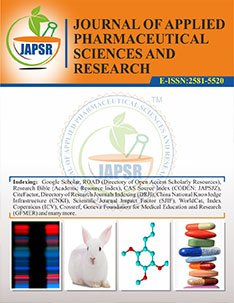DETECTION OF BACTERIOPHAGES AGAINST ESKAPE GROUP OF NOSOCOMIAL PATHOGENS FROM GANGA RIVER WATER DURING COMMUNITY BATH AT VARIOUS RITUALS: SINCE 2013–2019
Abstract
Introduction: Several species of bacterial contaminants are at the high level in river Ganga water but question arises that, why Ganga water is not spoiled even left for long time and answer is a presence of biological components including bacteriophage and bioactive component such as nanoparticles. Objective: In the present study our aim was to detect bacteriophages of resistant microbes such as ESKAPE group of nosocomial and S. Typhi. from different Ganga water samples collected on different rituals. Material & Methods: This study started since 2013 and completed in 2020. As per study design water sample from different places (Prayagraj, Mirzapur and Varanasi) and sites were collected. A total 210 strains (30 each) of Enterococcus faecium (E. faecium), Staphylococcus aureus (S. aureus), Klebsiella pneumoniae (K. pneumoniae), Acinetobacter baumanii (A. baumannii), Pseudomonas aeruginosa (P. aeruginosa), Escherichia coli (E. coli) ( Called as ESKAPE group) and additionally S. Typhi were identified from the in 500 clinical samples. These identified strains were processed for their biochemical test microscopy and antibiotic sensitivity for its conformation. Confirmed ESKAPE and S. Typhi strains were used for lawn culture. The bacteriophages were isolated from the collected Ganga water samples by using the double layer agar assay method. Results and Discussion: Bacteriophages were observed in the form of plaques on the bacterial lawn culture. Among 210 strains (30 each) of E. faecium, S. aureus, K. pneumoniae, A. baumannii, P. aeruginosa, E. coli and S. Typhi total 52 phages were detected in the form of plaques on the bacterial lawn culture. Maximum no of phage sensitivity were identified with E. coli (13) then in S. aureus (11). Eight phages of ware specific to S. Typhi and seven were specific to P. aeruginosa and how ever in six phages are specific to K. pneumoniae and E. faecium. Minimum no of phage sensitivity were identified with A. baumanii (1). Conclusion: Our study concludes that Ganga water is a huge source of above detected bacteriophages among all possible natural sources with full of diversity. This is development of a phage bank, which will be useful for bacteriophage therapy in near future.
Downloads
All the articles published in JAPSR are distributed under a creative commons license (CC BY-NC-SA 4.0)
Under this license, you are free to:
- Share- copy and redistribute the material in any medium or format for any purpose, even commercially.
- Adapt- remix, transform, and build upon the material for any purpose, even commercially.
The licensor cannot revoke these freedoms as long as you follow the license terms.
- Attribution — You must give appropriate credit , provide a link to the license, and indicate if changes were made . You may do so in any reasonable manner, but not in any way that suggests the licensor endorses you or your use.
- NonCommercial — You may not use the material for commercial purposes .
- ShareAlike — If you remix, transform, or build upon the material, you must distribute your contributions under the same license as the original.
- No additional restrictions — You may not apply legal terms or technological measures that legally restrict others from doing anything the license permits.
Copyright policy
The journal allows the author(s) to hold the copyright of their work. That means the authors do not need to transfer the copyright of their work to the journal. However, the authors grant JAPSR a license to publish the article and identify itself as the original publisher.
Licensing policy
The journal allows the author(s) to hold the copyright of their work. That means the authors do not need to transfer the copyright of their work to the journal. However, the authors grant JAPSR a license to publish the article and identify itself as the original publisher.






